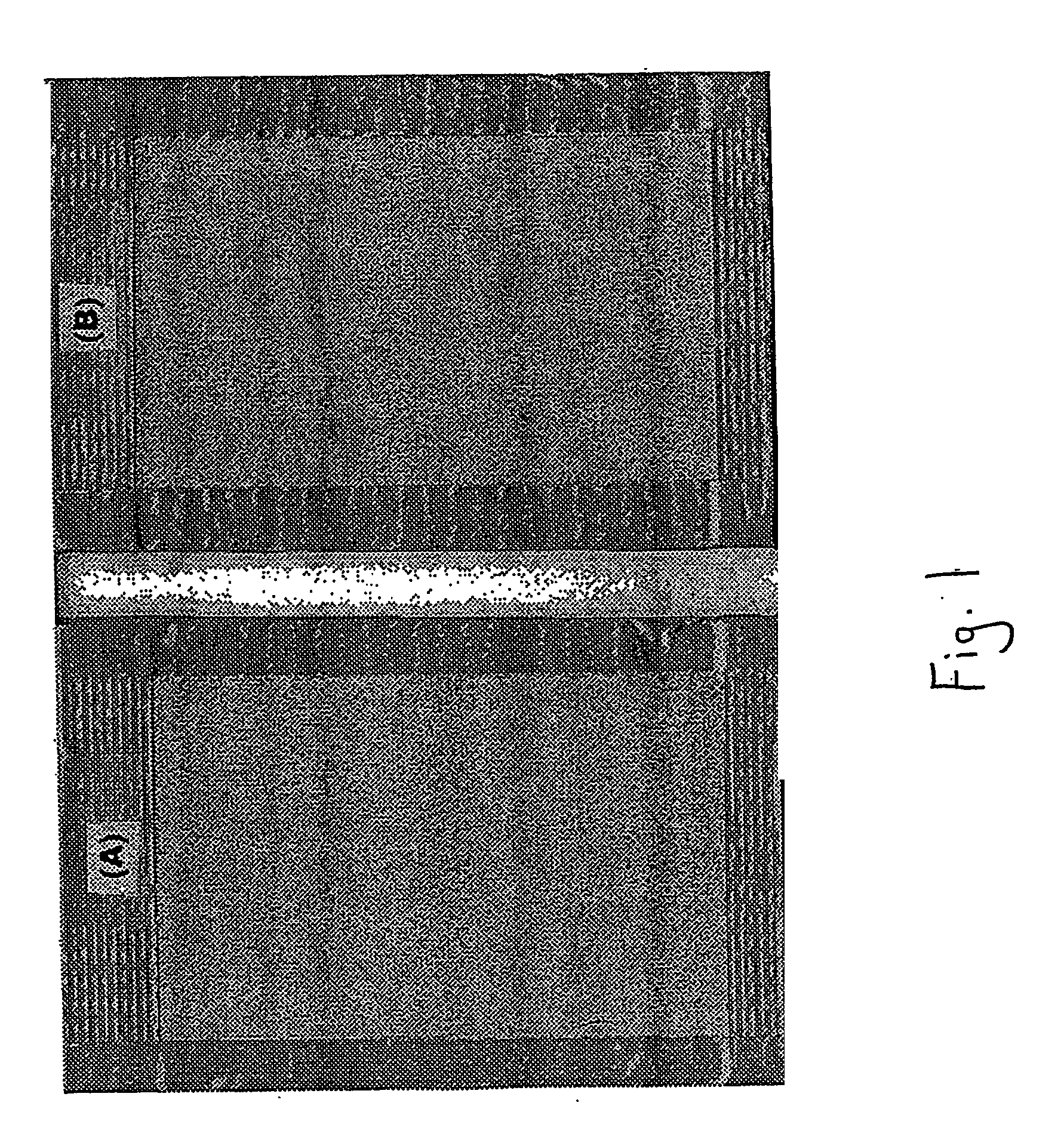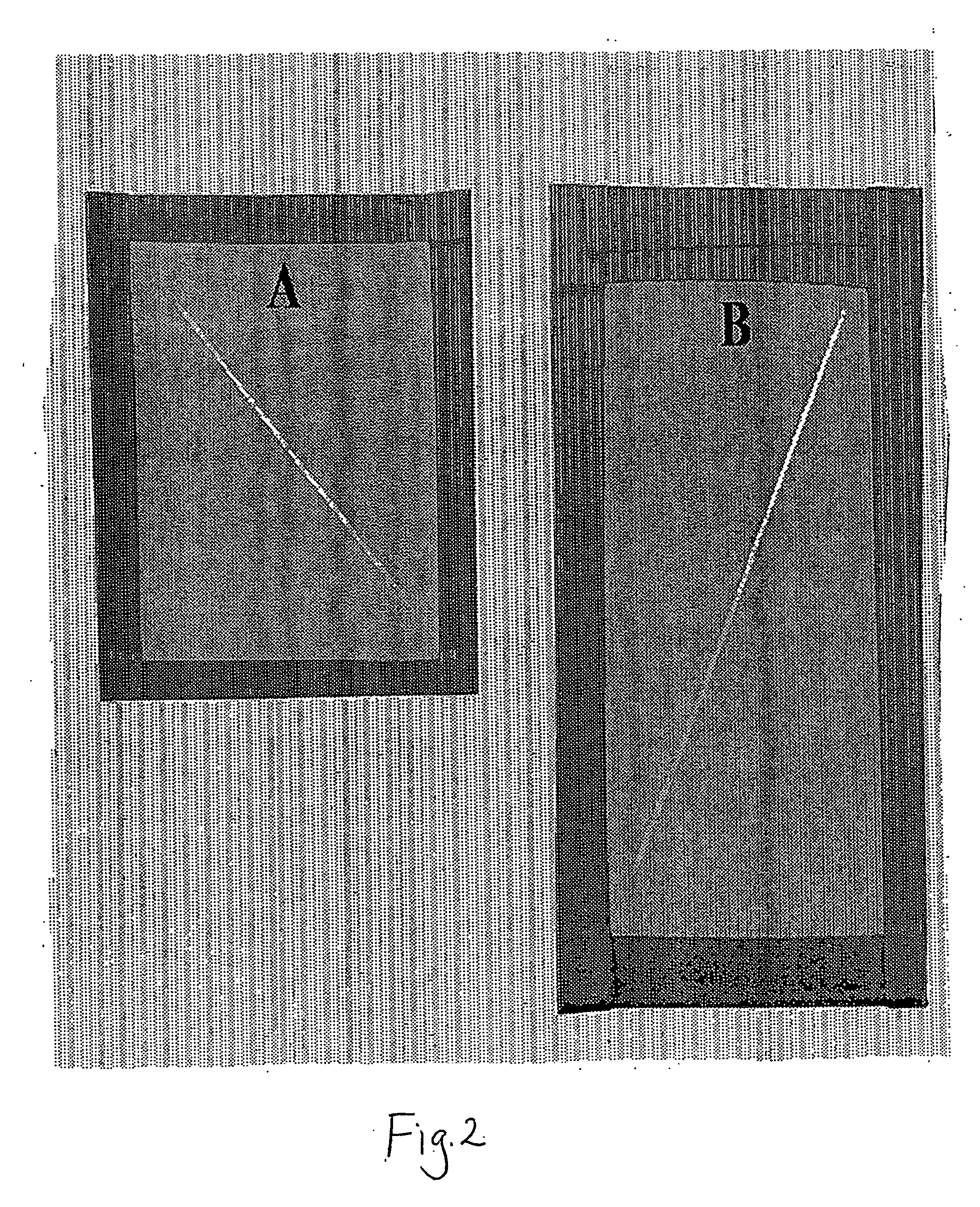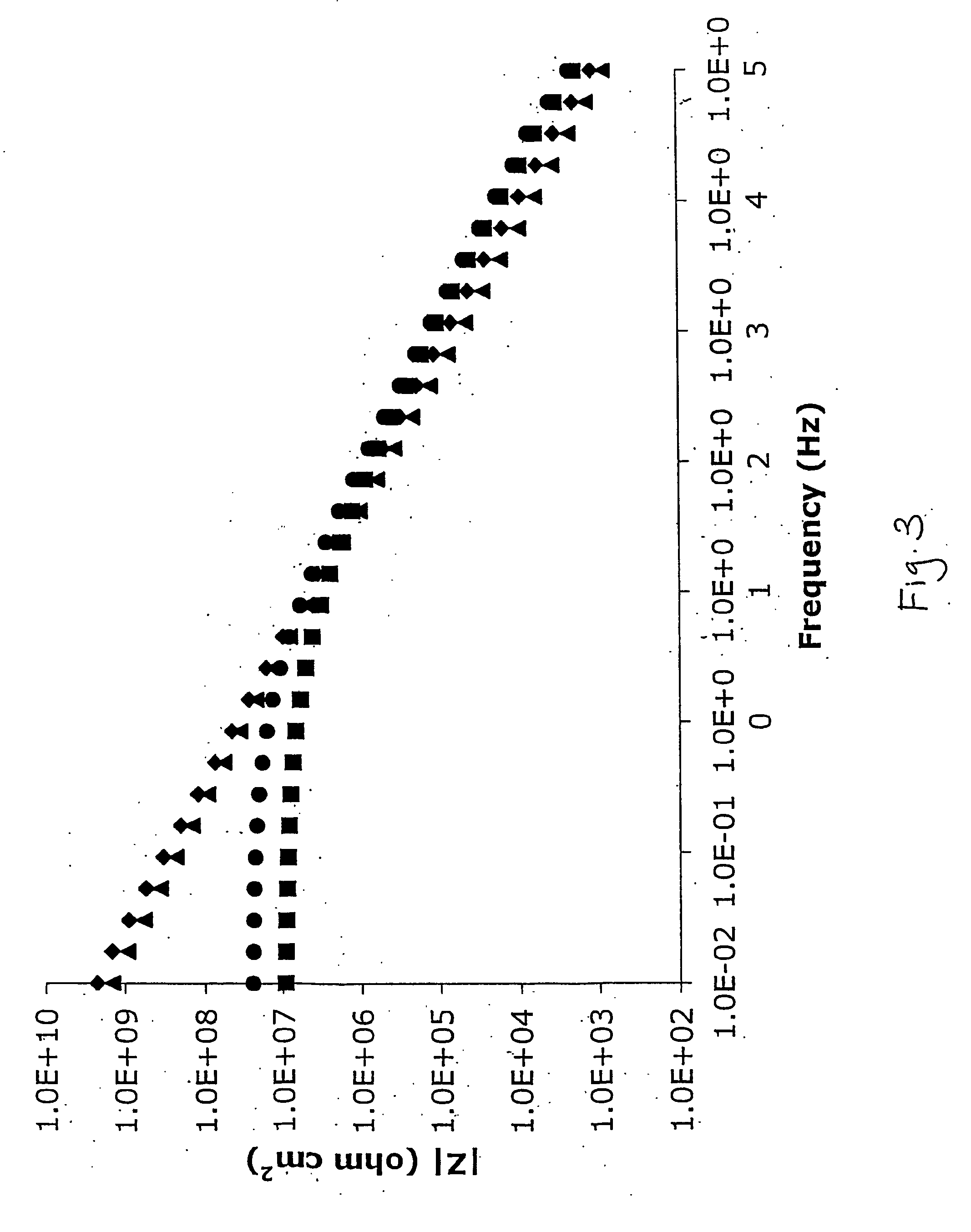Surface base-coat formulation for metal alloys
a technology of metal alloys and base coats, applied in the field of metal alloy coatings, can solve the problems of metals almost always subjected to chromate treatment, metals are generally more soluble in water than reactive or electrolytic chromate films, and cannot form a chromate film on metals
- Summary
- Abstract
- Description
- Claims
- Application Information
AI Technical Summary
Problems solved by technology
Method used
Image
Examples
example 1
[0082] A chemically pretreated galvanized or zinc-alloy-plated steel sheet is commonly used to inhibiting corrosions of steel substrates. The processed galvanized steel has poor fingerprint resistance and earthing properties. The corrosion inhibition galvanized steel is also poor, leading to the formation of white rust covered the entire zinc coated steel in less than 24 hours in a salt (fog) spray test (ASTM B-117). The galvanized steel is utilized in large quantity for electronic parts, equipment or the like that require good fingerprint resistance, earthing properties, and corrosion resistance. In current industrial practice, the ultra thin organic coatings (about 1 micrometer thick) are generally applied on high-speed lines. This desired organic coating should have excellent anti-fingerprinting characteristics, resist to alkaline solution (i.e. 2% tri-sodium phosphate solution at 65 degrees C. for 2 minutes) and passes a 120 hours salt (fog) spray test (ASTM B117). These chrome-...
example 2
[0085] Magnesium-based alloys are of interest for many industrial applications due to their favorable strength to weight ratio, such as AZ91 and ZE41. However, it is the corrosion resistance that often limits the applications of magnesium-based alloys. Furthermore, the surface of a magnesium alloy is known to be very difficult to coat. Even with the chromic acid (toxic and carcinogenic) treatment applied it causes serious problems such as insufficient adhesive strength resulting from a release agent and unevenness of treatment involved and inadequate corrosion resistance incurred from slight impurities contained in the materials.
[0086] The current surface treatment processed for magnesium alloys are chromate conversion coating non-chromate (i.e. manganate, vanadate, stannate, etc.) conversion coating, cold phosphate conversion coating, and galvanic anodizing treatment. The processes involve multiple steps and are error-prone and costly. The multi-step surface treatment technologies...
example 3
[0089] The AFP (anti-fingerprint coating) was developed recently in applicant's lab. It has been shown to provide excellent metal surface pretreatment on bare cold-rolled steel (CRS), galvanized steel, magnesium alloys, and titanium alloys. Here, the AFP system is extended and applied to the untreated 2024-T3 Bare Al coupon, by dipping and spinning off the excess emulsion. The pretreated Al coupon is then thermally cured at 150° C. (oven temperature) for 1 min. to give a treated 2024-T3 Bare / AFP Al panel. A 0.8-0.9 mil dry film of AD9318 / AD2298 chromate primer was prepared on 2024-T3 Bare / AFP and 2024-T3 Bare / Alodine 1200 coupons, and cured overnight at 49° C. The resistance to corrosion of AFP and Alodine 1200 surface pretreatment on 2024-T3 Bare aluminum alloy is examined by salt spray tests and electrochemical impedance spectroscopy (EIS) scans.
[0090]FIG. 2 displays panels of 2024-T3 Bare / Alodine 1200 (photograph A) and on 2024-T3 Bare / AFP (photograph B) coated with AD9318 / AD229...
PUM
| Property | Measurement | Unit |
|---|---|---|
| Percent by mass | aaaaa | aaaaa |
| Percent by mass | aaaaa | aaaaa |
| Percent by mass | aaaaa | aaaaa |
Abstract
Description
Claims
Application Information
 Login to View More
Login to View More - R&D
- Intellectual Property
- Life Sciences
- Materials
- Tech Scout
- Unparalleled Data Quality
- Higher Quality Content
- 60% Fewer Hallucinations
Browse by: Latest US Patents, China's latest patents, Technical Efficacy Thesaurus, Application Domain, Technology Topic, Popular Technical Reports.
© 2025 PatSnap. All rights reserved.Legal|Privacy policy|Modern Slavery Act Transparency Statement|Sitemap|About US| Contact US: help@patsnap.com



